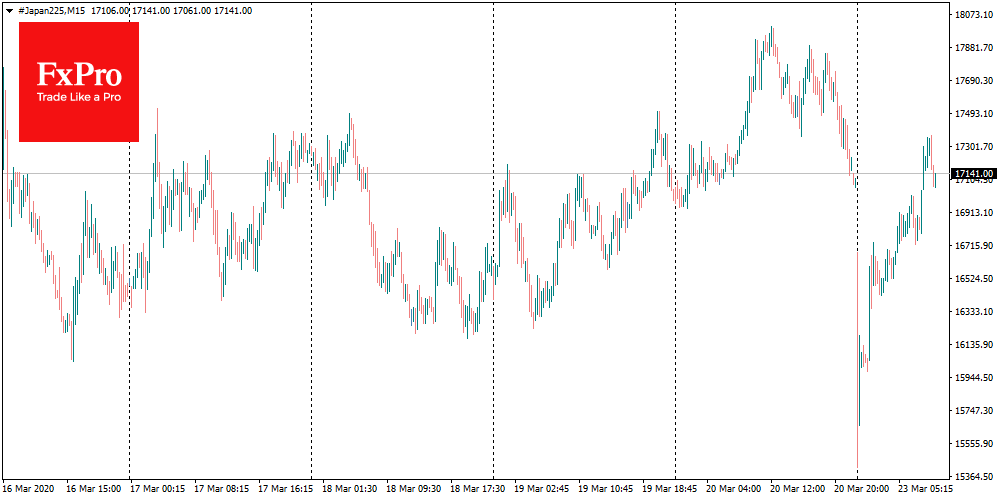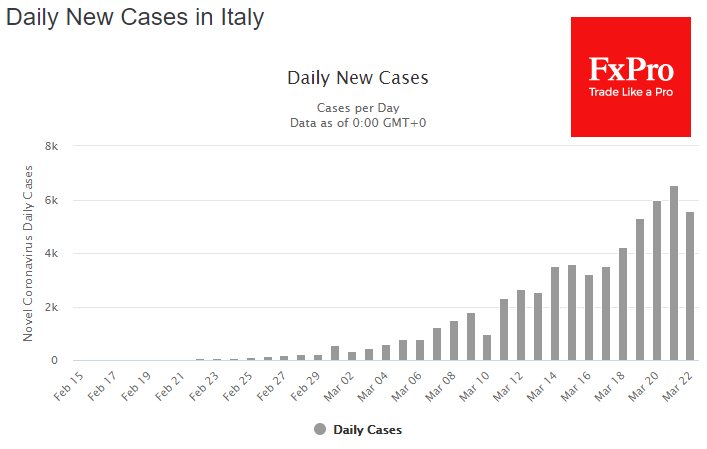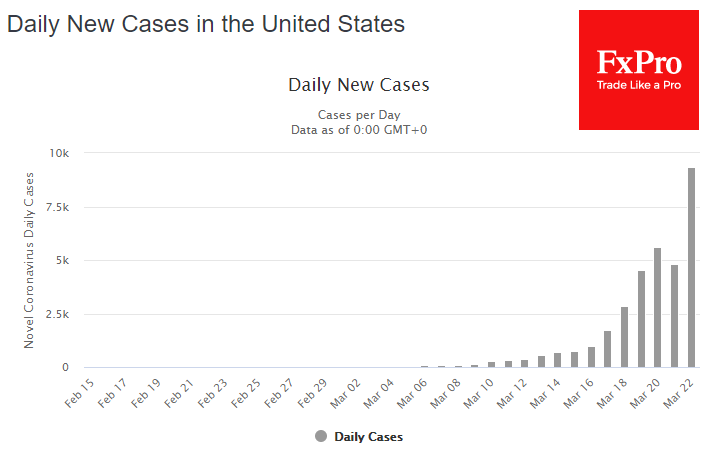Coronavirus impact: markets in Europe increase whilst US still pressured
March 23, 2020 @ 12:48 +03:00
The world markets start the week with a decline. Futures on US indices were again close to the limit-down, losing about 5% against Friday’s closing levels, but subsequently reduced the decline to 2.2%. Democrats bloc new emergency stimulus package by about $2 trillion (about 10% of GDP) that launched a new wave of pressure in the markets. They noted that in this form, the package helps businesses, not people. The process can take a long time, putting additional destabilizing pressure on markets.
Germany is also expected to approve today its 10% of GDP package to counteract the infection and its economic consequences.
The Japanese authorities seem to have found a non-monetary way to support the local stock market. The news that the Olympic Games will be postponed but not cancelled entirely caused the Nikkei 225 rally by 12.5% against the lows on the opening of the day. Such dynamics have somewhat reduced the heat in the indices of the Asian region.
Asia is relatively more successful in fighting the spread of disease, which makes the indices of this region perform better than European and American counterparts. China, South Korea and Japan in containing the spread of the disease is much better than that of Europe. Populations in these countries have previously suffered from a range of infectious diseases, and now they have a more sophisticated arsenal of measures from personal hygiene and social distance to the government’s response.
Iran is also showing some progress, with the number of new cases daily standing at around 1,000. These are high levels, but at least they are stable.
Weekend data from Europe evoke mixed feelings. Data from the Nordic countries show an increase in the rate of morbidity. It is positive that in the main sites of infection (Italy, Spain, Germany) we are witnessing some decline in the number of new cases. If this trend is confirmed, it will be possible to hope that from this point the situation will stop worsening, the economic quarantine won’t be tightened further, and the fire in the money markets will be taken under control.
Taking China as a starting point, we can hope that markets will try to find the bottom near existing levels, and at least reduce the range of intraday fluctuations.
The US data, however, makes us look to the future with some fear feeling. On March 22, the number of newly identified cases jumped to 9339, almost twice as high as levels in the previous two days. There is no way to stop the virus from spreading at the moment.
Unfortunately, neither markets nor economies should expect a V-shaped recovery yet.
The FxPro Analyst Team












